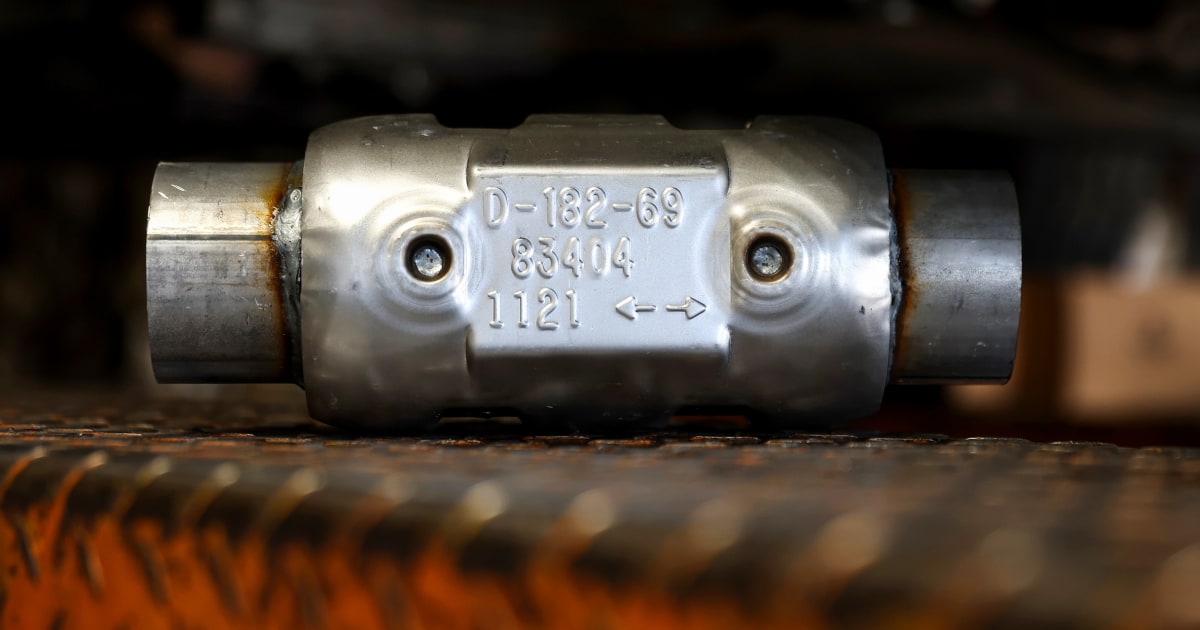
Thefts of catalytic converters surged so aggressively during the pandemic that Congress looked to step in. Now, new data indicates that the tidal wave of thefts is subsiding.
Claims data from the National Insurance Crime Bureau shows that the average number of catalytic converters stolen each month is down significantly from its peak in 2022 through the first nine months of this year.
Basic economics may be a factor.
Catalytic converters, an anti-pollution part installed under every car, are made of several metals — platinum, palladium and rhodium — that spiked in value from 2020 to 2022. The price of rhodium, for example, rose from approximately $3,000 an ounce in 2019 to nearly $26,000 two years later.
Rep. Jim Baird, R-Ind., noted that the metal prices were the “real driver” of the thefts, saying: “as the price of those metals go up, [thieves] are more interested in them.”
But the business of converter theft has been squeezed from both sides in 2023. The prices of the precious metals have tumbled, with rhodium’s price down to one-sixth of its 2021 peak. Simultaneously, rising scrutiny from law enforcement and new laws that create tougher penalties have increased the downside for those in the stolen converter trade.
In Pennsylvania’s Bucks County, north of Philadelphia, investigators busted an $8.2 million catalytic converter theft ring in June. The effect on thefts in the area was immediate, Bucks County District Attorney Matt Weintraub said.
“Since we’ve taken down [the ring], it’s been reported to me that there’s been a 50% decrease in catalytic converter thefts,” Weintraub said. “And that’s just taking down this one organization.”
At the federal level, the Justice Department announced a bust of a $545 million national catalytic converter crime ring in November 2022. The bust involved FBI, IRS and Homeland Security agents operating in 10 states from California to Oklahoma to New Jersey.
“We’ve essentially created a template showing what’s possible,” Weintraub said. “That if you have the will and the cooperation of local, state, and federal government law enforcement, you can put these guys out of business.”
This year alone, 21 states have enacted laws aimed at combating thefts, according to the NICB, with 19 other states introducing similar legislation. And Baird introduced federal legislation in January that would require that converters be stamped with the ID number they came from, as well as codify thefts as a criminal offense.
State and local governments have passed numerous laws since 2020. But until the metal prices fell, the effectiveness of these laws was mixed. Texas enacted a law requiring catalytic converter sellers provide a thumbprint and proof of purchase of the part. Despite the law, converter thefts in Texas reached new heights in 2022, NICB data showed. Reporting from NBC’s Dallas-Fort Worth affiliate attributes this to thieves skirting laws by stealing in Texas, but selling in other states with weaker laws.
It’s the voices at the top of the “criminal food chain” that trigger waves of catalytic converter thefts, Weintraub said. “These trends don’t occur randomly — it’s just economics: supply and demand.”
